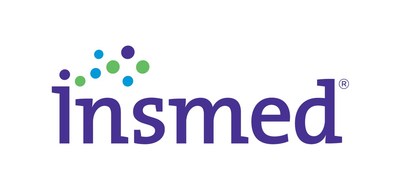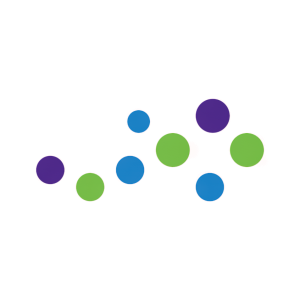Insmed to Present New Clinical, Pre-Clinical, and Real-World Data in Serious and Rare Lung Diseases at the American Thoracic Society 2023 International Conference
Insmed, a biopharmaceutical company, announced eight presentations focusing on lung diseases at the American Thoracic Society (ATS) 2023 International Conference, scheduled for May 19-24, 2023, in Washington, D.C. Key highlights include:
- A qualitative interview study on amikacin liposome inhalation suspension (ARIKAYCE)
- Subgroup analysis of the Phase 2 WILLOW study on brensocatib in bronchiectasis patients
- Data on the hospitalization burden for patients with chronic obstructive pulmonary disease (COPD) and nontuberculous mycobacterial lung disease.
Insmed aims to address significant challenges in treating serious and rare lung diseases.
- None.
- None.
—Data from Retrospective Study Evaluating the Association Between Hospitalization Burden and Delay in Diagnosis of Nontuberculous Mycobacterial (NTM) Lung Disease Among Patients with Chronic Obstructive Pulmonary Disease (COPD) to Be Shared in Oral Presentation—
—Researchers to Present Subgroup Analysis from Phase 2 WILLOW Study Evaluating Brensocatib Treatment Outcomes by Disease Severity in Patients with Bronchiectasis—
"We are excited to present a broad range of data from our portfolio highlighting critical topics in serious and rare lung diseases, including real-world ARIKAYCE and NTM lung disease data as well as subgroup analyses from the Phase 2 WILLOW study of brensocatib in bronchiectasis," said
Presentations:
- Poster discussion session,
Monday, May 22 ,9:00 AM-11:00 AM ET : A Qualitative Interview Study to Explore the Use of Adverse Event Mitigation Strategies Among Adults Receiving Amikacin Liposome Inhalation Suspension (ALIS) in Real World Settings (B28/920) - Thematic poster session,
Monday, May 22 , 9:00 AM–4:15 PM ET: Treprostinil Palmitil Hydrolysis Is Facilitated by Lung Esterases (B59/P218) - Mini symposium,
Monday, May 22 ,2:15 PM-4:15 PM ET : Long-term Hospitalization Burden Among Patients With Chronic Obstructive Pulmonary Disease With Possible Diagnostic Delays of Nontuberculous Mycobacterial Lung Disease (B98) - Poster discussion session,
Monday, May 22 ,2:15 PM-4:15 PM ET : - Outcomes of Patients With Bronchiectasis by Disease Severity: Subgroup Analysis From the Brensocatib WILLOW Study (B103/808)
- The Dipeptidyl Peptidase-1 Inhibitor Brensocatib Reduces Airway Azurocidin-1 Levels in Bronchiectasis (B103/807)
- Treatment Patterns and Adverse Events (AEs) Among Patients With Bronchiectasis (BE) Chronically Receiving Macrolides Over a 1-Year Follow-up Period (B103/809)
Association of Baseline and Subsequent Bronchiectasis Exacerbations in Patients From the US Bronchiectasis and NTM Research Registry (BRR) (B103/804)- Longitudinal Changes in Forced Expiratory Volume 1 (FEV1) According to Exacerbation Frequency in Patients From the US Bronchiectasis and NTM Research Registry (BRR) (B103/805)
About ARIKAYCE
ARIKAYCE is approved in the United States as ARIKAYCE® (amikacin liposome inhalation suspension), in
About PARI Pharma and the Lamira® Nebulizer System
ARIKAYCE is delivered by a novel inhalation device, the Lamira® Nebulizer System, developed by PARI. Lamira® is a quiet, portable nebulizer that enables efficient aerosolization of ARIKAYCE via a vibrating, perforated membrane. Based on PARI's 100-year history working with aerosols, PARI is dedicated to advancing inhalation therapies by developing innovative delivery platforms to improve patient care.
About Brensocatib
Brensocatib is a small molecule, oral, reversible inhibitor of dipeptidyl peptidase 1 (DPP1) being developed by
About TPIP
Treprostinil palmitil inhalation powder (TPIP) is a dry powder formulation of treprostinil palmitil, a treprostinil prodrug consisting of treprostinil linked by an ester bond to a 16-carbon chain. Developed entirely in
IMPORTANT SAFETY INFORMATION FOR ARIKAYCE IN THE
WARNING: RISK OF INCREASED RESPIRATORY ADVERSE REACTIONS |
ARIKAYCE has been associated with an increased risk of respiratory adverse reactions, including hypersensitivity pneumonitis, hemoptysis, bronchospasm, and exacerbation of underlying pulmonary disease that have led to hospitalizations in some cases. |
Hypersensitivity Pneumonitis has been reported with the use of ARIKAYCE in the clinical trials. Hypersensitivity pneumonitis (reported as allergic alveolitis, pneumonitis, interstitial lung disease, allergic reaction to ARIKAYCE) was reported at a higher frequency in patients treated with ARIKAYCE plus background regimen (
Hemoptysis has been reported with the use of ARIKAYCE in the clinical trials. Hemoptysis was reported at a higher frequency in patients treated with ARIKAYCE plus background regimen (
Bronchospasm has been reported with the use of ARIKAYCE in the clinical trials. Bronchospasm (reported as asthma, bronchial hyperreactivity, bronchospasm, dyspnea, dyspnea exertional, prolonged expiration, throat tightness, wheezing) was reported at a higher frequency in patients treated with ARIKAYCE plus background regimen (
Exacerbations of underlying pulmonary disease has been reported with the use of ARIKAYCE in the clinical trials. Exacerbations of underlying pulmonary disease (reported as chronic obstructive pulmonary disease (COPD), infective exacerbation of COPD, infective exacerbation of bronchiectasis) have been reported at a higher frequency in patients treated with ARIKAYCE plus background regimen (
Anaphylaxis and Hypersensitivity Reactions: Serious and potentially life-threatening hypersensitivity reactions, including anaphylaxis, have been reported in patients taking ARIKAYCE. Signs and symptoms include acute onset of skin and mucosal tissue hypersensitivity reactions (hives, itching, flushing, swollen lips/tongue/uvula), respiratory difficulty (shortness of breath, wheezing, stridor, cough), gastrointestinal symptoms (nausea, vomiting, diarrhea, crampy abdominal pain), and cardiovascular signs and symptoms of anaphylaxis (tachycardia, low blood pressure, syncope, incontinence, dizziness). Before therapy with ARIKAYCE is instituted, evaluate for previous hypersensitivity reactions to aminoglycosides. If anaphylaxis or a hypersensitivity reaction occurs, discontinue ARIKAYCE and institute appropriate supportive measures.
Ototoxicity has been reported with the use of ARIKAYCE in the clinical trials. Ototoxicity (including deafness, dizziness, presyncope, tinnitus, and vertigo) were reported with a higher frequency in patients treated with ARIKAYCE plus background regimen (
Nephrotoxicity was observed during the clinical trials of ARIKAYCE in patients with MAC lung disease but not at a higher frequency than background regimen alone. Nephrotoxicity has been associated with the aminoglycosides. Close monitoring of patients with known or suspected renal dysfunction may be needed when prescribing ARIKAYCE.
Neuromuscular Blockade: Patients with neuromuscular disorders were not enrolled in ARIKAYCE clinical trials. Patients with known or suspected neuromuscular disorders, such as myasthenia gravis, should be closely monitored since aminoglycosides may aggravate muscle weakness by blocking the release of acetylcholine at neuromuscular junctions.
Embryo-Fetal Toxicity: Aminoglycosides can cause fetal harm when administered to a pregnant woman. Aminoglycosides, including ARIKAYCE, may be associated with total, irreversible, bilateral congenital deafness in pediatric patients exposed in utero. Patients who use ARIKAYCE during pregnancy, or become pregnant while taking ARIKAYCE should be apprised of the potential hazard to the fetus.
Contraindications: ARIKAYCE is contraindicated in patients with known hypersensitivity to any aminoglycoside.
Most Common Adverse Reactions: The most common adverse reactions in Trial 1 at an incidence ≥
Drug Interactions: Avoid concomitant use of ARIKAYCE with medications associated with neurotoxicity, nephrotoxicity, and ototoxicity. Some diuretics can enhance aminoglycoside toxicity by altering aminoglycoside concentrations in serum and tissue. Avoid concomitant use of ARIKAYCE with ethacrynic acid, furosemide, urea, or intravenous mannitol.
Overdosage: Adverse reactions specifically associated with overdose of ARIKAYCE have not been identified. Acute toxicity should be treated with immediate withdrawal of ARIKAYCE, and baseline tests of renal function should be undertaken. Hemodialysis may be helpful in removing amikacin from the body. In all cases of suspected overdosage, physicians should contact the
LIMITED POPULATION: ARIKAYCE® is indicated in adults, who have limited or no alternative treatment options, for the treatment of Mycobacterium avium complex (MAC) lung disease as part of a combination antibacterial drug regimen in patients who do not achieve negative sputum cultures after a minimum of 6 consecutive months of a multidrug background regimen therapy. As only limited clinical safety and effectiveness data for ARIKAYCE are currently available, reserve ARIKAYCE for use in adults who have limited or no alternative treatment options. This drug is indicated for use in a limited and specific population of patients.
This indication is approved under accelerated approval based on achieving sputum culture conversion (defined as 3 consecutive negative monthly sputum cultures) by Month 6. Clinical benefit has not yet been established. Continued approval for this indication may be contingent upon verification and description of clinical benefit in confirmatory trials.
Limitation of Use: ARIKAYCE has only been studied in patients with refractory MAC lung disease defined as patients who did not achieve negative sputum cultures after a minimum of 6 consecutive months of a multidrug background regimen therapy. The use of ARIKAYCE is not recommended for patients with non-refractory MAC lung disease.
Patients are encouraged to report negative side effects of prescription drugs to the FDA. Visit www.fda.gov/medwatch, or call 1–800–FDA–1088. You can also call the Company at 1-844-4-
Please see Full Prescribing Information.
About
Forward-looking Statements
This press release contains forward-looking statements that involve substantial risks and uncertainties. "Forward-looking statements," as that term is defined in the Private Securities Litigation Reform Act of 1995, are statements that are not historical facts and involve a number of risks and uncertainties. Words herein such as "may," "will," "should," "could," "would," "expects," "plans," "anticipates," "believes," "estimates," "projects," "predicts," "intends," "potential," "continues," and similar expressions (as well as other words or expressions referencing future events, conditions or circumstances) may identify forward-looking statements.
The forward-looking statements in this press release are based upon the Company's current expectations and beliefs, and involve known and unknown risks, uncertainties and other factors, which may cause the Company's actual results, performance and achievements and the timing of certain events to differ materially from the results, performance, achievements or timings discussed, projected, anticipated or indicated in any forward-looking statements. Such risks, uncertainties and other factors include, among others, the following: failure to obtain, or delays in obtaining, regulatory approvals for ARIKAYCE outside the
The Company may not actually achieve the results, plans, intentions or expectations indicated by the Company's forward-looking statements because, by their nature, forward-looking statements involve risks and uncertainties because they relate to events and depend on circumstances that may or may not occur in the future. For additional information about the risks and uncertainties that may affect the Company's business, please see the factors discussed in Item 1A, "Risk Factors," in the Company's Annual Report on Form 10-K for the year ended December 31, 2022 and any subsequent Company filings with the
The Company cautions readers not to place undue reliance on any such forward-looking statements, which speak only as of the date of this press release. The Company disclaims any obligation, except as specifically required by law and the rules of the
Contact:
Investors:
Executive Director, Investor Relations
(646) 812-4030
bryan.dunn@insmed.com
Eleanor Barisser
Associate Director, Investor Relations
(718) 594-5332
eleanor.barisser@insmed.com
Media:
Executive Director, Corporate Communications
(732) 718-3621
amanda.fahey@insmed.com
![]() View original content to download multimedia:https://www.prnewswire.com/news-releases/insmed-to-present-new-clinical-pre-clinical-and-real-world-data-in-serious-and-rare-lung-diseases-at-the-american-thoracic-society-2023-international-conference-301781216.html
View original content to download multimedia:https://www.prnewswire.com/news-releases/insmed-to-present-new-clinical-pre-clinical-and-real-world-data-in-serious-and-rare-lung-diseases-at-the-american-thoracic-society-2023-international-conference-301781216.html
SOURCE
FAQ
What presentations will Insmed showcase at the ATS 2023 International Conference?
When is the ATS 2023 International Conference?
What is the significance of the WILLOW study for Insmed?
How is Insmed addressing lung disease data at the ATS conference?








